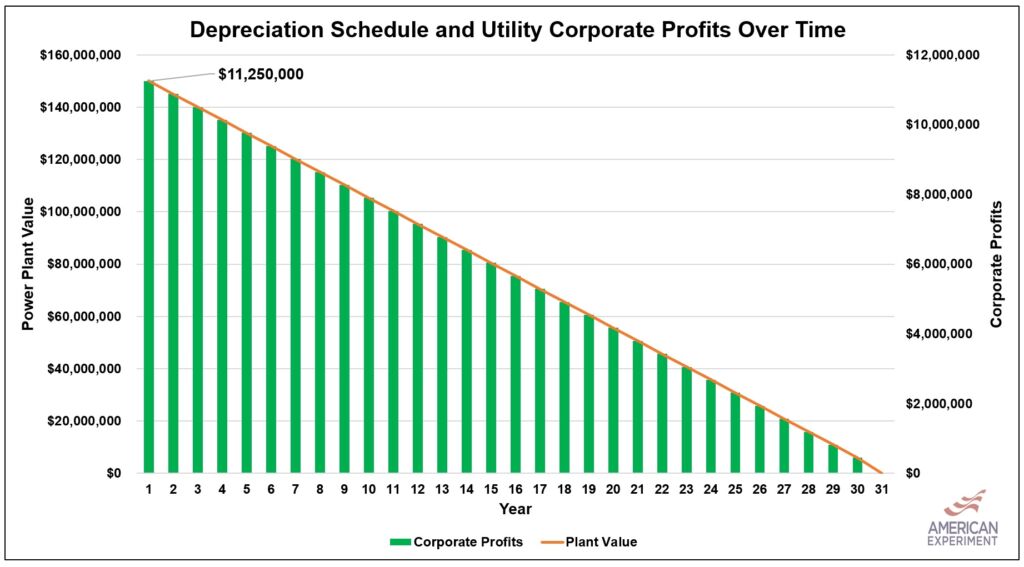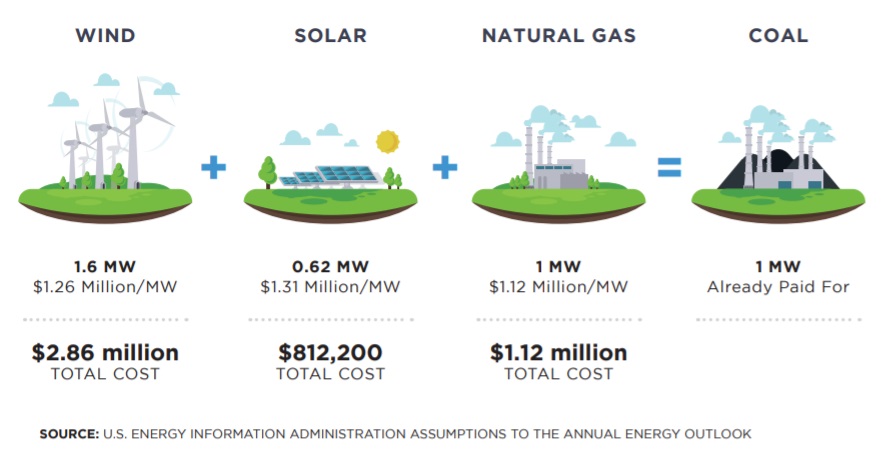Wrong incentives drive wind and solar development
The article below originally appeared in the Minneapolis Star Tribune:
In the June 7 commentary “Wrong incentives drive energy decisions,” the author correctly notes that utilities have the wrong encouragements. However, these bad incentives encourage them to build new wind turbines, solar panels, and natural gas plants as quickly as possible to reap enormous corporate profits.
Unfortunately, these profits are paid for by Minnesota families and businesses who must spend more for their electricity and cannot choose another provider.
The math for utility profits, as laid out in the previous piece, is straightforward. The more the utility company spends (costs), the more guaranteed profits the company is allowed to earn on top (plus).
However, the author omitted an aspect of the formula: The amount of profit a utility makes on a power plant declines every year as it depreciates. As older power plants pay off their capital costs, the cost of producing electricity from them declines, which allows customers to enjoy lower-cost, reliable electricity.
The process is like paying off your mortgage. Every month, you pay off more principal and less interest than the previous month. Eventually, the whole loan is paid off, and you save a substantial amount on your housing costs. You need only pay for taxes, utilities and repairs.
This is where the wrong incentives truly come into play. Utilities like Xcel Energy are rushing to retire their largely depreciated coal plants — which produce lower-cost electricity than unsubsidized wind or solar, according to federal data — a decade before the end of their useful lifetimes because they don’t make much profit on them anymore.

To increase profits, Xcel is seeking to build an expensive combination of new — read: undepreciated — wind turbines, solar panels, transmission lines and the natural gas plants needed to make sure we do not experience blackouts when the wind isn’t blowing or the sun isn’t shining. This is an enormous amount of “cost” in which to make a “plus.”
The numbers are startling. According to the most recent cost estimates from the federal government, it costs $1.2 million per megawatt to install solar panels, $1.4 million per MW for wind, and $1.1 million per MW to build a combined-cycle natural gas facility in Minnesota.

According to Xcel Energy documents, the company plans to build 4,079 megawatts of utility and community solar, 7,549 MW of new and “repowered” wind turbines, and 1,537 MW of natural gas to replace 2,390 MW of coal on its system. This means the company wants to spend (cost) more than $17 billion to replace coal plants that still have 10 to 20 years of useful life, in addition to receiving a handsome “plus” on top.
Indeed, Center of the American Experiment conducted its own modeling of Xcel Energy’s “preferred plan” and found it would increase the utility’s profits by $21 billion through 2051, including profits earned on building transmission lines needed to connect faraway wind and solar facilities to the grid.
While these additional “costs” and “pluses” will be a boon to Xcel shareholders, they will impose massive costs on Minnesota families and businesses. Our analysis found the average Xcel Energy customer (including residential, commercial and industrial) will pay, on average, an additional $1,428 per year through 2051 compared with today’s prices.
Not only will Xcel Energy customers pay much more for their electricity, but the grid will also be less reliable than it is today. Xcel admits in its documents that despite its wind and solar spending spree, it will need to import power from the regional grid during periods of high electricity demand and low wind and solar output. This is the California model for expensive and unreliable electricity.
Incentives do matter, which is why electric consumers need choices. Giving Xcel’s customers the freedom to switch to Otter Tail Power or Minnesota Power — both of which have lower prices — would help rein in these wrong incentives and encourage responsible resource planning.
Isaac Orr is a policy fellow specializing in energy and environmental policy at Center of the American Experiment.